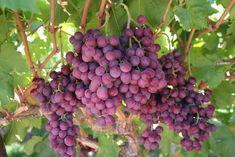
South African table grape growers in the early production regions are counting the cost as rain affected production in the Northern regions, the Orange River and parts of the Western Cape.
The South African table grape industry is considering revised crop estimates after rain affected production across the country. SATI, the table grape industry body, says revised estimates will be issued tomorrow.
“We are busy with a comparison of this year and last year’s intakes and exports and will be looking at particular cultivars which may be more affected than others. Our Board has asked that until that is done that we rather do not make statements. That way it is better informed,” said Elaine Alexander, executive director of SATI.
Earlier this week SATI chairman Johan van Niekerk warned against over reacting to the situation. He admitted, however, that the damage may be significant and that it will have a big effect on growers. “We are spending a lot of time reassuring the trade and our new estimates will reflect the true situation.”
As news filters through into the markets, there are already reports that prices are firming up, while some customers are finding it difficult to source sufficient supplies. “It is one of those seasons where you do not know whether you have to laugh or cry about what happened in the last weeks before Christmas,” says one importer. “The snow and cold weather across Western Europe turned the pre-Christmas period into a misery and those who perhaps did not have much stock were smiling. Now we need those volumes as the market turns around.”
Of concern to growers will be the fact that they lost ground in key sales weeks and that grapes had to be stored due to lack of demand caused by the extreme weather rather than being sold on arrival.
It is in the Orange River region where most of the damage will be felt. One exporter says the total crop could drop to 12 million cartons, which will be more than to million cartons down on the original estimates. This could result in losses of up to €20m and which could damage the economy in a region which relies so much on table grape exports.
In the Western Cape rain over the New Year’s weekend hit the early red seedless grape crop at the worst possible time.
The fact that much higher volumes were shipped up to week 48 than the year before will mean that there should presently be enough grapes in the markets to meet customer programmes. Up to week 48 shipments to the UK amounted to 1.7m cartons, compared to only 635 000 the year before. Shipments to Northern Europe amounted to 2.7m cartons compared to 527,000 the year before. Higher volumes were also shipped to the Middle East and other markets.
In the Western Cape the unexpected New Year’s rain has been followed by extremely hot weather, with the Central Berg River region, which is now entering the peak production weeks, experiencing temperatures around 40 degrees Celcius on consecutive days.



